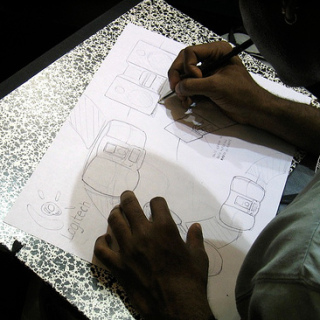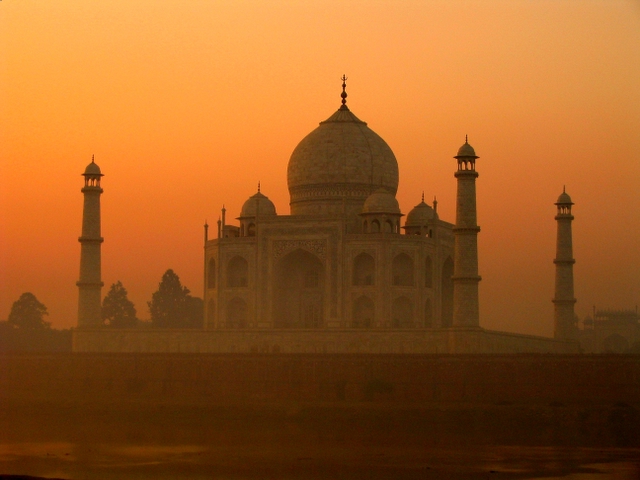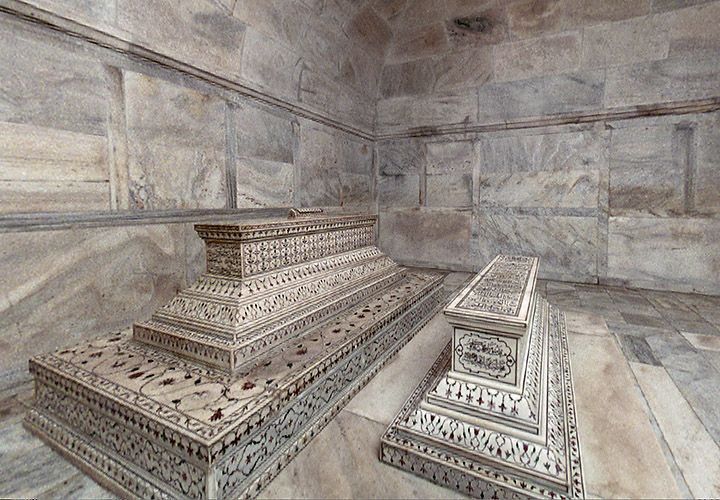Join Communities:
 Enhance your Writing Skills |
 Become a Photographer |
 Handigifts |
 Learn about Jazz & More |
 Love the Art |
Seven Wonders of the World:
Taj Mahal
Taj Mahal is a mausoleum
located in Agra, India, that was built under Mughal Emperor Shah
Jahan in memory of his favorite wife, Mumtaz Mahal. The Taj Mahal
is considered the finest example of Mughal
architecture, a style that combines elements from
Persian, Turkish, Indian, and Islamic architectural styles. In
1983, the Taj Mahal became a UNESCO
World Heritage Site and was cited as "the jewel of Muslim art
in India and one of the universally admired masterpieces of the
world's heritage."
While the white domed marble and tile mausoleum is most familiar,
Taj Mahal is an integrated symmetric complex of structures that
was completed around 1648. Ustad Ahmad Lahauri is generally
considered to be the principal designer of the Taj
Mahal.

History
By the late 19th century, parts of the Taj Mahal
had fallen badly into disrepair. During the time of the Indian
rebellion of 1857, the Taj Mahal was defaced by British soldiers
and government officials, who chiseled out precious stones and
lapis lazuli from its walls. At the end of 19th century British
viceroy Lord Curzon ordered a massive restoration project, which
was completed in 1908. He also commissioned the large lamp in the
interior chamber, modeled after one in a Cairo mosque. During
this time the garden was remodeled with British-looking lawns
that are visible today.
In 1942, the government erected a scaffolding in anticipation of
an air attack by German Luftwaffe and later by Japanese Air
Force. During the India-Pakistan wars of 1965 and 1971,
scaffoldings were again erected to mislead bomber pilots. Its
recent threats have come from environmental pollution on the
banks of Yamuna River including acid rain due to the Mathura oil
refinery, which was opposed by Supreme Court of India directives.
In 1983, the Taj Mahal was designated a UNESCO World Heritage Site.

The Garden
The complex is set around a large 300-meter
square charbagh, a Mughal garden. The garden uses raised pathways
that divide each of the four quarters of the garden into
16 sunken parterres or flowerbeds. A raised
marble water tank at the center of the garden, halfway between
the tomb and gateway, with a reflecting pool on North-South axis
reflects the image of the Taj Mahal. Elsewhere, the garden is
laid out with avenues of trees and fountains. The raised marble
water tank is called al Hawd al-Kawthar, in reference to "Tank of
Abundance". The charbagh garden, a design inspired by Persian
gardens, was introduced to India by the first Mughal emperor
Babur. It symbolizes four flowing rivers of
Paradise and reflects the gardens of Paradise derived
from the Persian paridaeza, meaning 'walled garden'. In mystic
Islamic texts of Mughal period, paradise is described as an ideal
garden of abundance with four rivers flowing from a central
spring or mountain, separating the garden into north, west, south
and east.

Tourism
The Taj Mahal attracts from 2 to 4
million visitors annually, with more than 200,000 from
overseas. Most tourists visit in the cooler months of October,
November, and February. Polluting traffic is not allowed near the
complex and tourists must either walk from car parks or catch an
electric bus. The Khawasspuras (northern courtyards) are
currently being restored for use as a new visitor centre. The
small town to the south of the Taj, known as Taj Ganji or
Mumtazabad, originally was constructed with caravanserais,
bazaars and markets to serve the needs of visitors and workmen.
Lists of recommended travel destinations often feature the Taj
Mahal, which also appears in several listings of seven wonders of
the modern world, including the recently announced New
Seven Wonders of the World, a recent poll with 100
million votes.
Reference/Image Credits:Wikipedia, Rebekahcoolbeans, Wikimedia, Taj-Mahal, Taj-Mahal

Post Comments